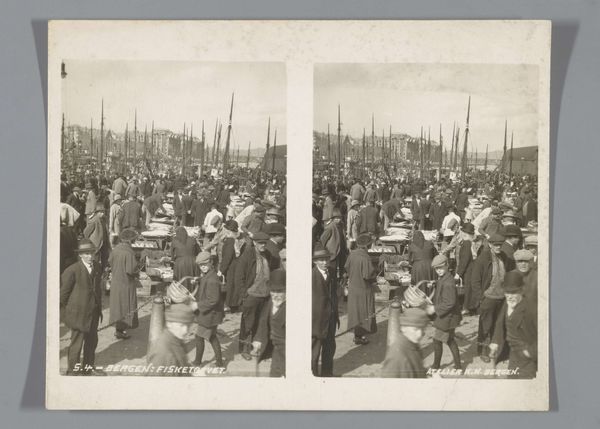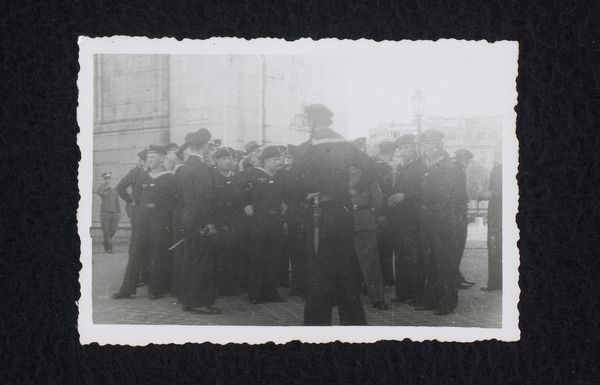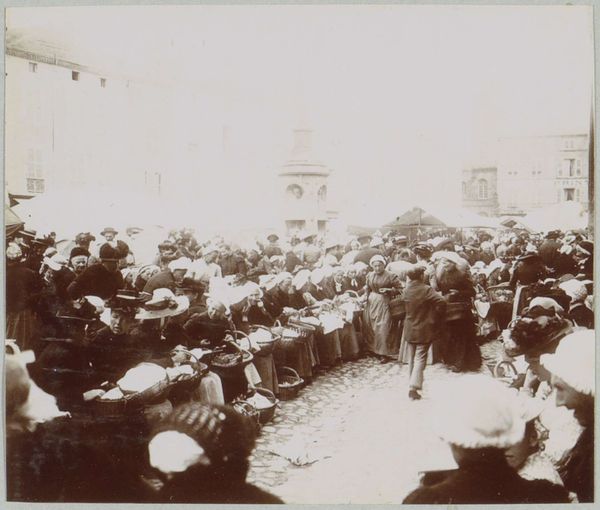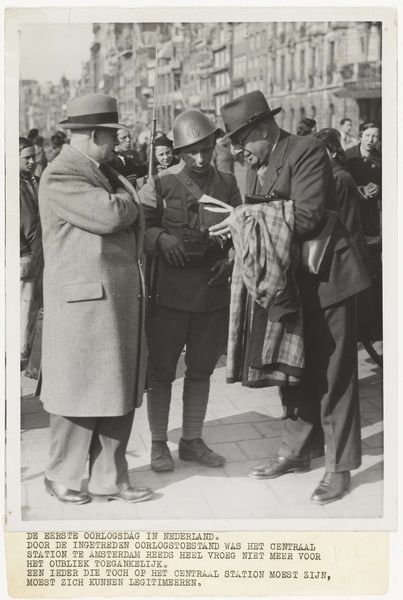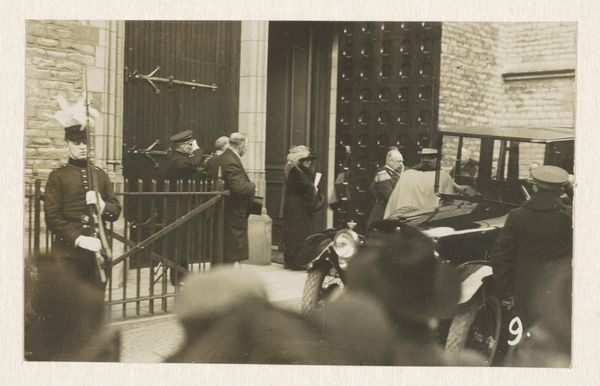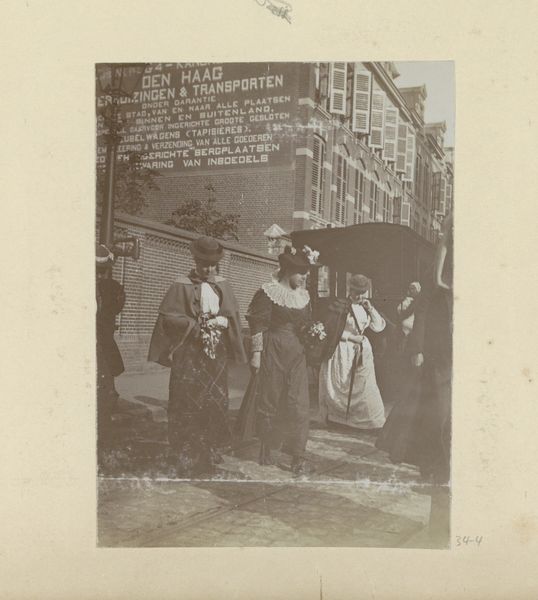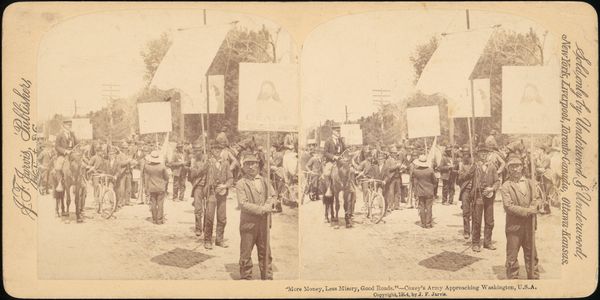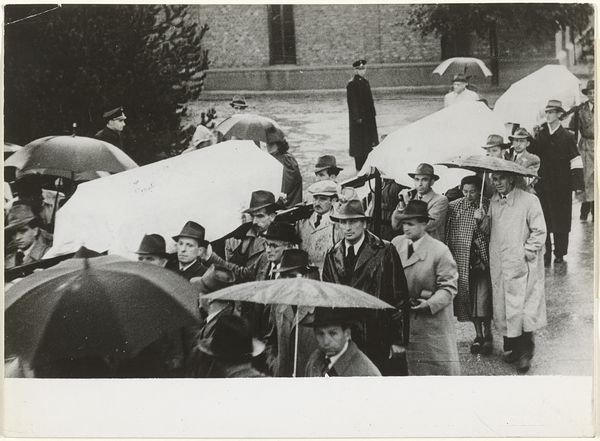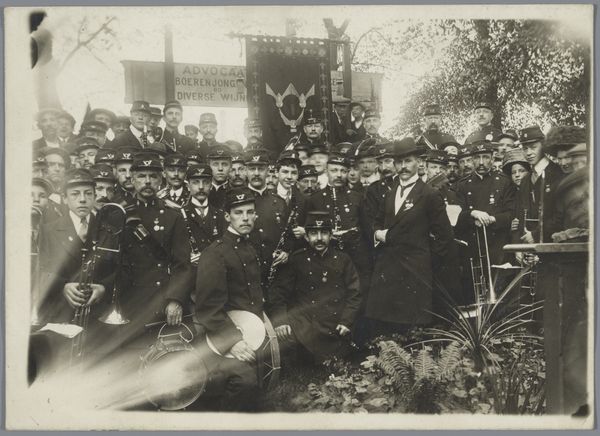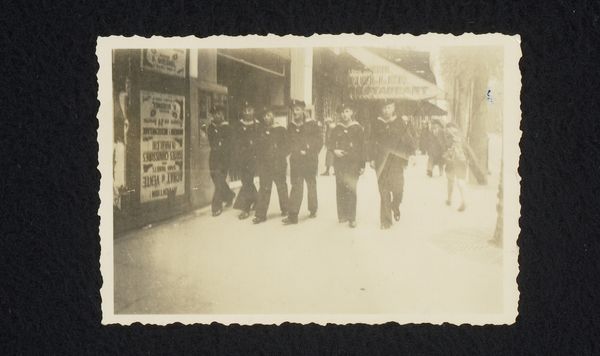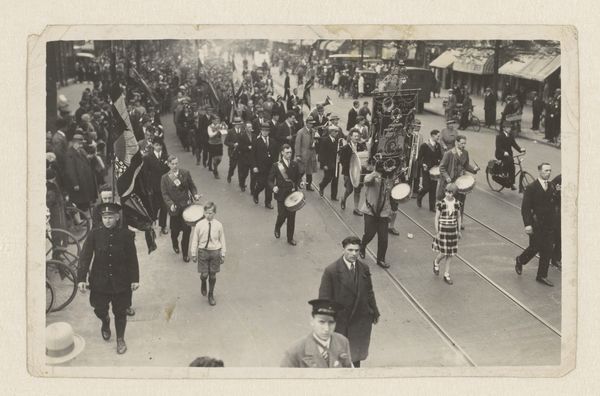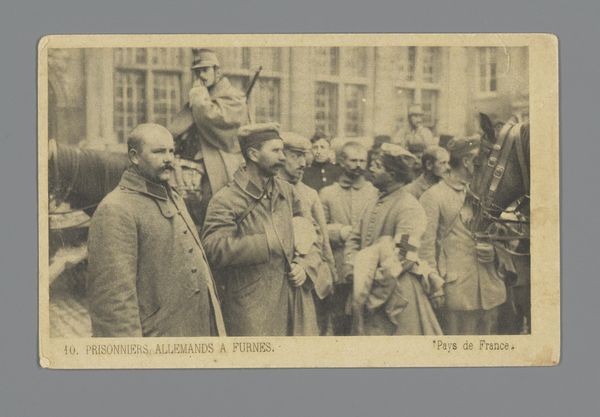
Dimensions: height 84 mm, width 113 mm
Copyright: Rijks Museum: Open Domain
Curator: Looking at this gelatin silver print titled "Workers' Demonstration, Paris," snapped sometime between 1909 and 1930 by the Séeberger brothers, I can’t help but wonder what story lies behind these faces. What are they protesting? What are they hoping to achieve? Editor: It feels less a march, more a restrained gathering. The somber, muted tones amplify this feeling. Look at the light catching the edges of the crowd—note how it emphasizes their close formation and creates this sense of containment. Curator: It's like a still moment taken from the theater of Parisian life. Notice the umbrellas held aloft—perhaps shielding the protestors from rain or sun, but they also cast the scene in a half-light, heightening the drama and making the crowd a collective protagonist. Editor: Indeed, see the arrangement. We've a barricade in the front and behind that, this undulating sea of faces, most turned toward something beyond our sight. Note the formal division established by the barrier; its placement is pivotal. It establishes both a limit, as well as a perspective. Curator: Ah, perspective. This feels more spontaneous and gritty than the paintings that so often celebrated workers during this period. I wonder what it was like to be in the thick of that gathering— the chants, the damp air, the energy of shared struggle and perhaps the anxiety, the shared goal. Editor: Consider that it might be more about capturing the nuances of social strata through spatial relations than sheer solidarity. The stark division made by that very visible railing underscores class boundaries inherent to its structure, separating those who watch over or potentially oppose. Curator: Maybe it speaks of Paris—how public and private intermix constantly on display no matter your place in society’s hierarchy. This scene isn’t easily reducible— it hums between protest, social study, street life, documentary impulse all under that muted palette the artists carefully cultivated during those decades… Editor: Absolutely. "Workers' Demonstration, Paris," the image resonates— beyond its historical timestamp it offers glimpses through textures, through expressions caught midstream. It's complex enough to allow ongoing discovery.
Comments
No comments
Be the first to comment and join the conversation on the ultimate creative platform.
